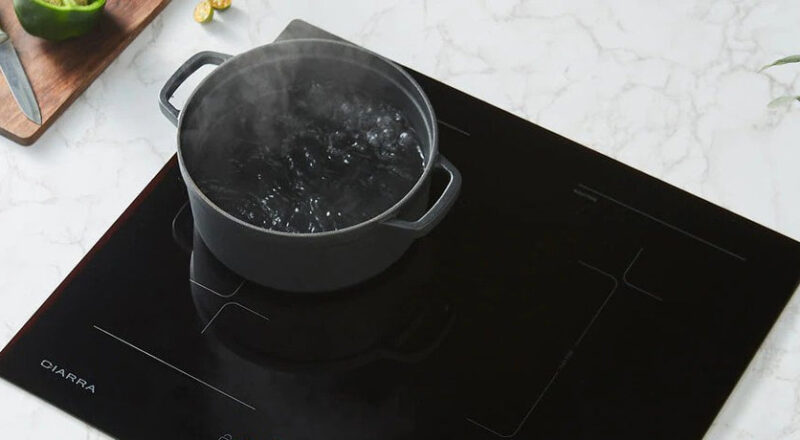Cooking with induction cooktops has become increasingly popular in modern kitchens. They offer faster heating and precise temperature control, making them a favorite among kitchen professionals and home cooks alike. However, for those who prefer using cast iron cookware, understanding how to maintain seasoning on induction is crucial for optimal performance and longevity of the cookware.
Seasoning is an essential process that protects your cast iron pans and enhances their non-stick properties. While induction cooktops provide numerous benefits, they also pose unique challenges when it comes to maintaining seasoning. In this article, we will explore effective methods and tips on how to maintain the seasoning on your cast iron cookware when using induction cooktops, ensuring that you can enjoy delicious meals without compromising on the quality of your cookware.

Understanding the Importance of Seasoning
Before diving into the specifics of maintaining seasoning on induction cooktops, it is essential to understand what seasoning is and why it matters. Seasoning is a process of creating a protective layer of oil on the surface of the cast iron pan. This layer not only prevents rust but also enhances the cookware’s natural non-stick properties, making it easier to cook and clean.
Why Induction Cooktops Are Different
Induction cooktops use electromagnetic fields to heat the cookware directly, which differs from traditional gas or electric stovetops. This direct heating can be more intense and may affect the seasoning layer on your cast iron pans if not handled properly. Therefore, understanding how to maintain seasoning on induction cooktops is essential for keeping your cast iron in top shape.
Steps to Maintain Seasoning on Induction Cooktops
1. Choose the Right Cookware
Using the right type of cookware is the first step in maintaining seasoning on induction cooktops. Ensure that your cookware is induction-compatible and has a flat bottom to ensure even heating. This will help prevent uneven wear and tear on the seasoning layer.
For more insights on the best type of cookware for induction, you can check this guide on induction cookware.
2. Preheat Gradually
One common mistake when using induction cooktops is overheating the pan too quickly. To maintain the seasoning, it’s important to preheat the pan gradually. Start with a low or medium heat setting and allow the pan to heat up slowly. This will prevent the seasoning from burning off.
3. Use the Correct Oil
Choose oils with a high smoke point, such as canola or grapeseed oil, for seasoning your cast iron. These oils can withstand the higher temperatures of induction cooking without breaking down, helping to preserve the seasoning layer.
4. Maintain Even Heating
Induction cooktops can sometimes cause uneven heating, leading to cold spots in your cast iron pan. To avoid this, ensure the pan is centered on the burner and consider using a diffuser if necessary. For more information on how to deal with cold spots, visit cold spots solutions.
5. Clean and Re-season Regularly
After cooking, clean your cast iron cookware with warm water and a brush or sponge. Avoid using soap, as it can strip away the seasoning. Once clean, dry the pan thoroughly and apply a thin layer of oil before storing. Regularly re-seasoning your cast iron will help maintain its non-stick properties and prevent rust.
Common Mistakes to Avoid
Maintaining seasoning on induction cooktops requires attention to detail and care. Here are some common mistakes to avoid:
Overheating the Pan
As mentioned earlier, overheating can damage the seasoning layer. Always start with a lower heat setting and gradually increase the temperature.
Using Harsh Cleaners
Avoid using harsh chemicals or scrubbers on your cast iron cookware, as they can strip away the seasoning. Stick to gentle cleaning methods to preserve the protective layer.
Ignoring Uneven Heating
Induction cooktops can sometimes create uneven heating patterns. Pay attention to how your cookware heats and make adjustments as needed to ensure even cooking.
Benefits of Maintaining Seasoning on Induction
Maintaining the seasoning on your cast iron cookware when using induction cooktops offers several benefits:
- Enhanced non-stick properties, making cooking and cleaning easier.
- Improved heat retention and distribution for even cooking.
- Protection against rust, extending the life of your cookware.
Better Cooking Experience
With a well-maintained seasoning layer, your cast iron pans will deliver consistent and reliable performance on induction cooktops. This ensures a better cooking experience and more delicious results.
Cost-Effective Solution
By taking care of your cast iron cookware and maintaining its seasoning, you can avoid the need for frequent replacements, making it a cost-effective solution for your kitchen.
FAQs
1. Can I use soap to clean my cast iron pan on induction cooktops?
While it’s generally best to avoid soap, a small amount can be used occasionally if needed. Just be sure to rinse thoroughly and reapply oil to maintain the seasoning.
2. Why is my cast iron pan not heating evenly on the induction cooktop?
Uneven heating can be caused by an improperly centered pan or the cooktop’s specific heating pattern. Ensure your pan is centered, and consider using a diffuser if necessary. For more tips, check out heating solutions.
3. How often should I re-season my cast iron cookware for induction?
Re-seasoning frequency depends on how often you use your cookware. Regular use may require re-seasoning every few months, while less frequent use may only need it once or twice a year.

Conclusion
Understanding how to maintain seasoning on induction cooktops is essential for keeping your cast iron cookware in excellent condition. By following these tips and avoiding common pitfalls, you can enjoy the benefits of both cast iron and induction cooking. With proper care, your cast iron pans will continue to deliver delicious results for years to come.
This article contains affiliate links. We may earn a commission at no extra cost to you.

